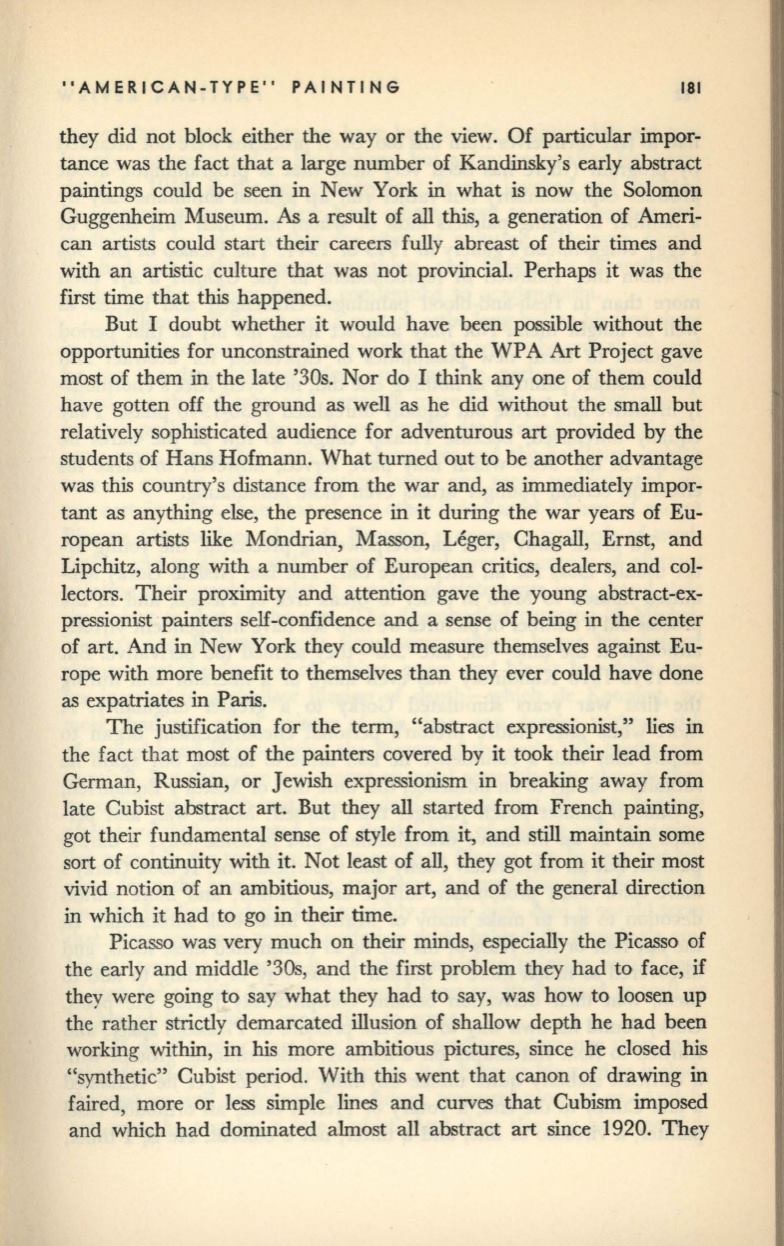
"AMERICAN-TYPE" PAINTING
181
they did not block either the way or the view. Of particular impor–
tance was the fact that a large number of Kandinsky's early abstract
paintings could be seen in New York in what is now the Solomon
Guggenheim Museum.
As
a result of all this, a generation of Ameri–
can artists could start their careers fully abreast of their times and
with an artistic culture that was not provincial. Perhaps it was the
first time that this happened.
But I doubt whether it would have been possible without the
opportunities for unconstrained work that the WPA Art Project gave
most of them in the late '30s. Nor do I think anyone of them could
have gotten off the ground as well as he did without the small but
relatively sophisticated audience for adventurous art provided by the
students of Hans Hofmann. What turned out to be another advantage
was this country's distance from the war and, as immediately impor–
tant as anything else, the presence in it during the war years of Eu–
ropean artists like Mondrian, Masson, Leger, Chagall, Ernst, and
Lipchitz, along with a number of European critics, dealers, and col–
lectors. Their proximity and attention gave the young abstract-ex–
pressionist painters self-confidence and a sense of being in the center
of art. And in New York they could measure themselves against Eu–
rope with more benefit to themselves than they ever could have done
as expatriates in Paris.
The justification for the term, "abstract expressionist," lies in
the fact that most of the painters covered by it took their lead from
German, Russian, or Jewish expressionism in breaking away from
late Cubist abstract art. But they all started from French painting,
got their fundamental sense of style from it, and stilI maintain some
sort of continuity with it. Not least of all, they got from it their most
vivid notion of an ambitious, major art, and of the general direction
in which it had to go in their time.
Picasso was very much on their minds, especially the Picasso of
the early and middle '30s, and the first problem they had to face, if
they were going to say what they had to say, was how to loosen up
the rather strictly demarcated illusion of shallow depth he had been
working within, in his more ambitious pictures, since he closed his
"synthetic" Cubist period. With this went that canon of dr.awing in
faired, more or less simple lines and curves that Cubism imposed
and which had dominated almost all abstract art since 1920. They


